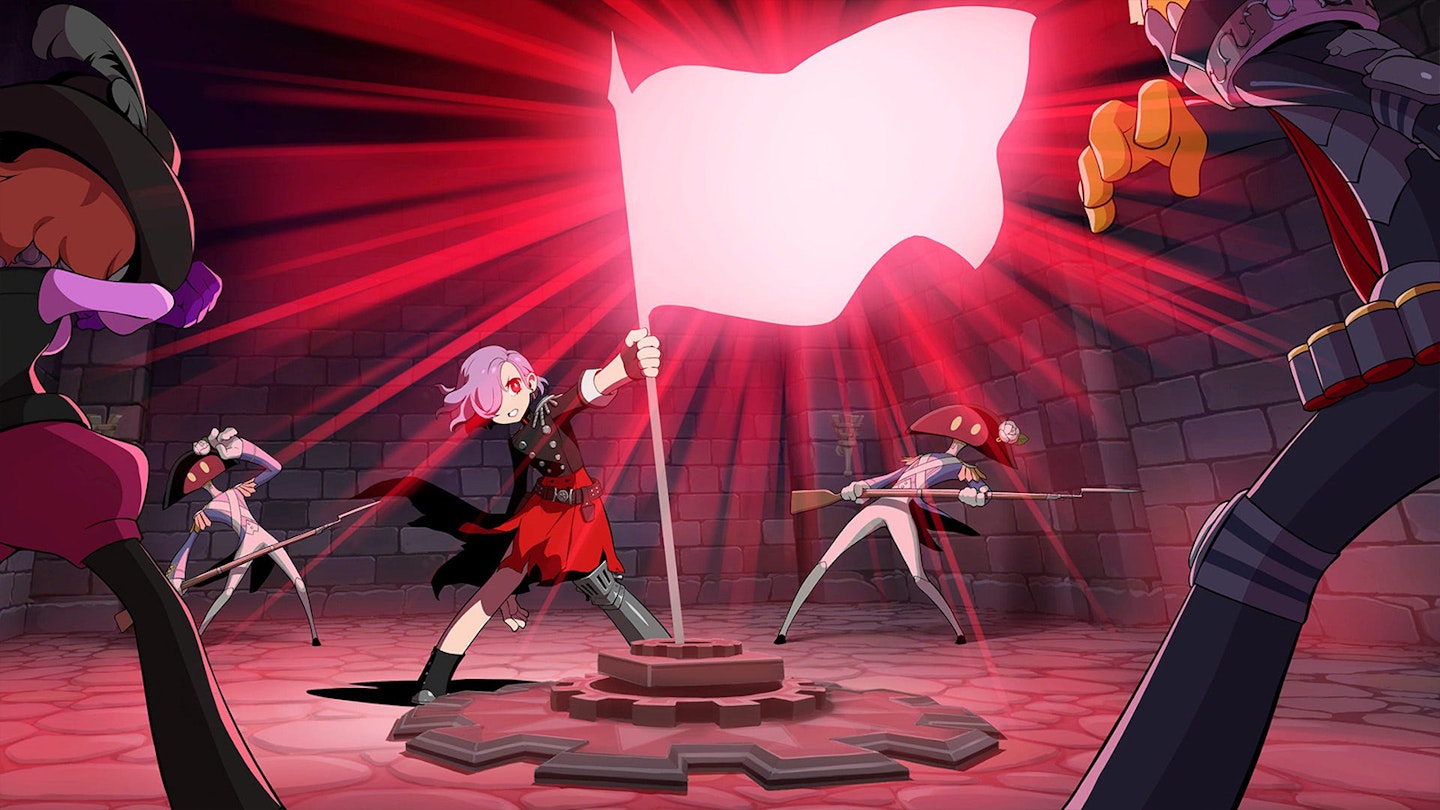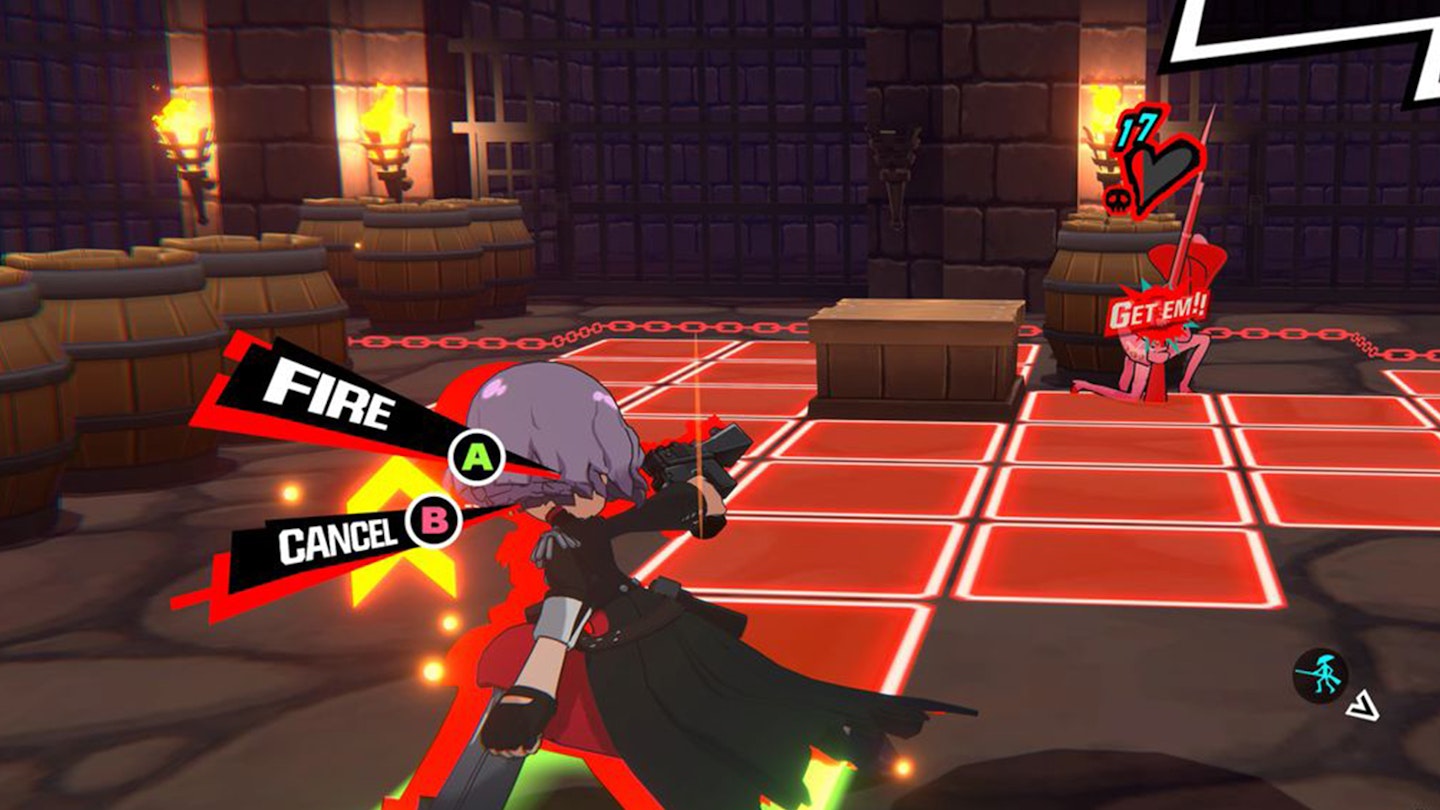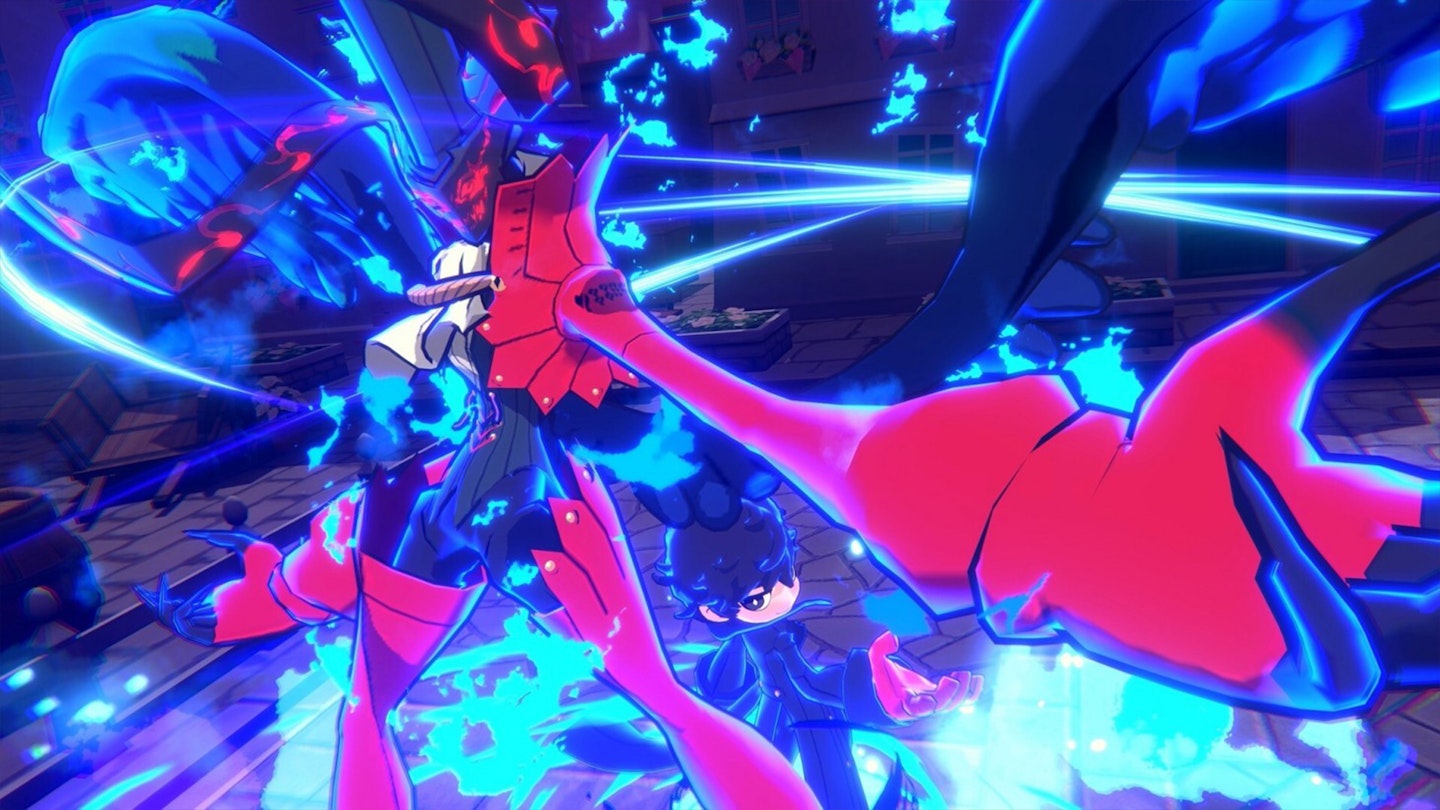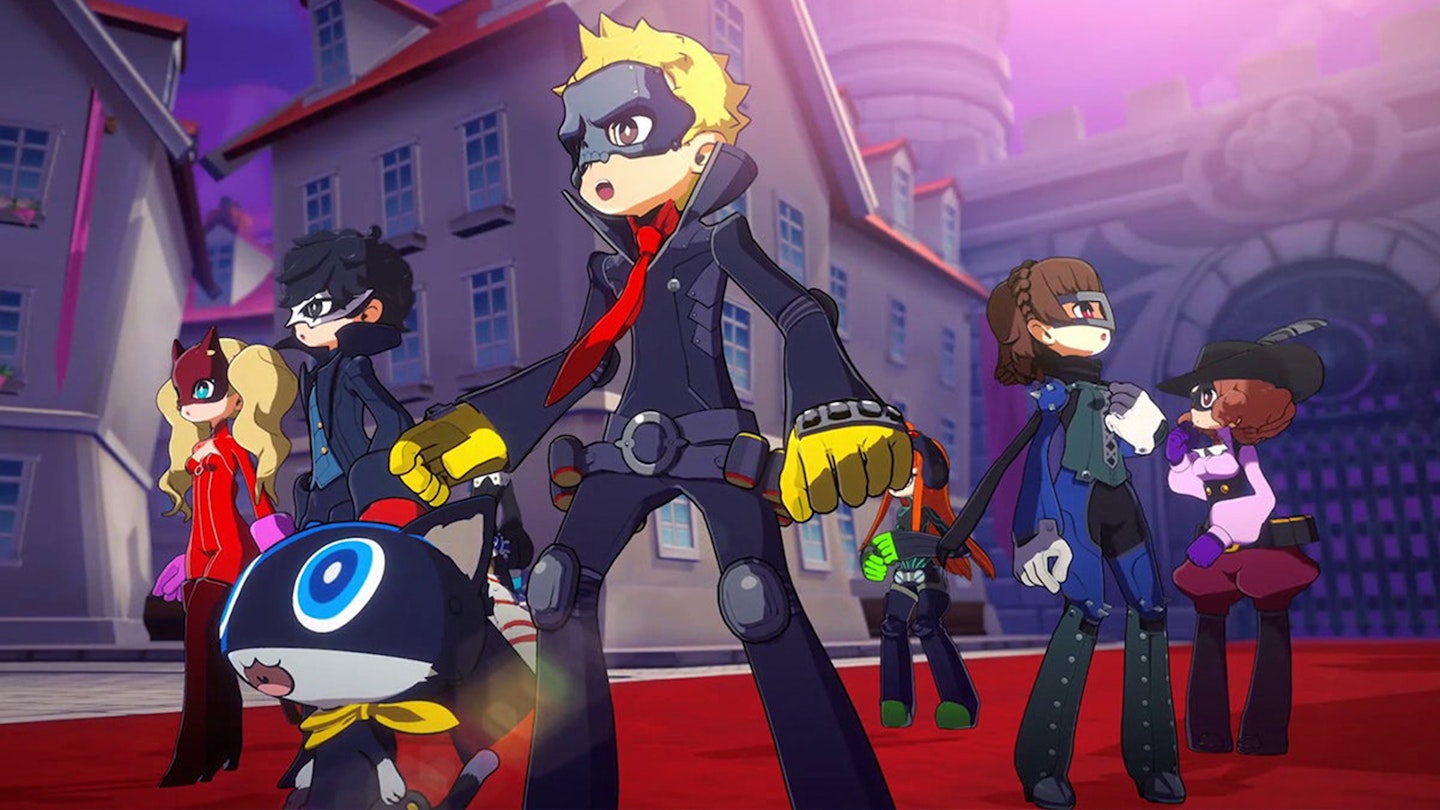Platforms: Nintendo Switch, PS5, PS4, Xbox Series X|S, Xbox One, PC
The Persona series is famously high concept, each core entry in Atlus' JRPG series crammed with complex teenage characters battling psycho-sexual manifestations of their evolving inner selves, and all hinged on a heady mix of Jungian psychology, demonology, and tarot. They're weird and even sometimes unsettling games crammed with bizarre ideas and conflicting ideologies – and that's half the fun.
However, that same complexity can make them unapproachable at times, particularly when it comes to spin-offs like Tactica. While playing the original Persona 5 (or 2020's upgraded Persona 5 Royal) isn't essential to get the most out of this turn-based strategy outing, knowing the characters, concepts, and more arcane bits of lore – like what, exactly, a Persona even is – from the base game will help a lot.

That's especially true given that, unlike 2021's action-focused sequel Persona 5 Strikers, Tactica is set alongside the events of Persona 5 itself. That means joining its young protagonists, the Phantom Thieves of Heart – a group of high schoolers who tap into the power of their personal demons to enter the Metaverse (no, not that one) and battle corrupted desires made manifest – when they already know each other well, with little effort made to reintroduce the cast or their situations before throwing them into yet another strange alternate reality.
A fun time, with plenty of versatility in how to approach each battle and a huge amount of replayability.
If you already know the background, though – or don't mind diving in at the deep end and glossing over a heap of references and presumed knowledge – it's pretty easy to be drawn into Tactica's own wild story. While the heroes usually battle through otherworldly dungeons known as Palaces, here they find themselves unexpectedly trapped in larger, stranger worlds called Kingdoms. Things are off to a bad start when they encounter Lady Marie – half marching-band-themed dominatrix, half psychotic bridezilla endlessly preparing for a wedding that's never coming – who almost immediately brainwashes the whole team.
The only escapees are Persona 5's main character Joker and feline familiar Morgana, setting the stage for early missions centred on rescuing allies from Marie's control. These offer the closest to any background for the cast, each rescue reintroducing them and their unique abilities. Even then, much of the focus falls on new heroine Erina, seemingly the only human to be found in the Kingdoms and leader of a Rebel Corps set on liberating them. She's a fun addition to the wider Persona 5 roster, with an emotionally engaging arc and some impressive powers in combat.

While Tactica is the first tactics spin-off from a Persona game (although the wider Megami Tensei franchise has dabbled with the genre before, notably in the Devil Survivor subseries), its turn-based gameplay eases in players unfamiliar with the form. Early battles are a simple trading of blows between manoeuvring party members into cover, before drip feeding new powers, techniques, and team-up moves as you progress.
Tactica doesn't break any of the rules laid by titans of the genre – indeed, if you've played XCOM or Mario + Rabbids, you'll be immediately at home with both the mechanics and the visual language used here. Characters can freely move around each battlefield within the limits of their personal movement radius, ending their turn after exhausting attacks, and with cover points clearly marked out by object height and shield icons. Where things get a bit more creative though are Tactica's "One More" system and the ways in which you can utilise space on the field to unleash Triple Threat attacks.

Mastering the first allows you to really dominate each stage. Attack an enemy that's exposed, and they'll be downed, allowing the attacking character to move again and take another action. There's a real skill in chaining these One More moments together – get it right, and you can storm through enemies in short order. Tactica's UI is subtly brilliant, clearly indicating when an attack will down a foe, allowing you to plan out your assault. One Mores also enable the Triple Threat attacks – position all three active party members in a triangle encompassing enemies, and so long as there's a One More move to use up, you'll be able to dish out a horrendously powerful group assault that can instantly take out most grunts.
Then there are unique charge and voltage effects. End a turn without a character having attacked, and they'll begin the next one charged, with a bonus skill active. Erina's, for example, allows her to immediately down enemies even if they're in cover, a useful trick to begin a chain of One More attacks. Every hero's charge skill is different though, and getting to grips with each of them, plus their special skills in battle, can create endlessly inventive synergies. Voltages, meanwhile, are more like Final Fantasy's Limit Breaks, charging over time by dealing and taking damage and, when full, unlocking an incredibly powerful move. Tactica gradually, but constantly, increases the battle options available to the player, and while there's never anything truly ground-breaking that fans of the genre won't have seen, battles are always entertaining.
Perhaps the biggest departure from Persona 5 itself – beyond the art direction, which here adopts a super-deformed aesthetic, although seemingly further influenced in places by the works of Kunihiko Ikuhara – is in the Personas themselves. Where before these were essentially demonic Pokémon, recruited in battle, now they're more like items, collected in the form of strange gears dropped as rewards. Where normally Joker is the only member of the Phantom Thieves to be able to use multiple Personas, in Tactica each squad member can equip a secondary Persona, boosting their stats or altering which spells and abilities they have access to in battle. As in P5, Personas can still be merged into more powerful forms – a key tool for unlocking more powerful Personas, beyond mere level grinding – but the new 'gear' approach does make them feel more disposable.
Oddly, the one thing holding Tactica back from greatness is just how familiar it all feels. We kind of expect Persona games to do something unexpected or off-kilter, but while this still has plenty of weird ideas and situations to wrap your head around, its root play styles and mechanics don't deviate far from other examples of the turn-based strategy genre. It's still a fun time, with plenty of versatility in how to approach each battle and a huge amount of replayability – each stage can be revisited endlessly, allowing you to test new party configurations or chase bonus completion criteria – and, for returning fans, it's great to revisit these characters, but it just doesn't quite hit the lofty heights of its progenitor.
